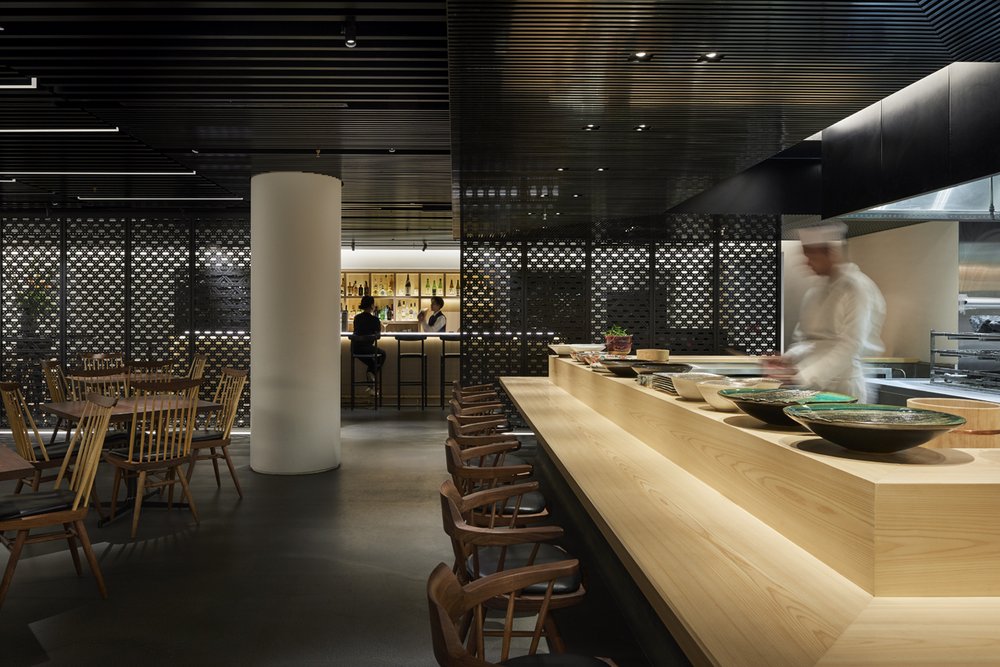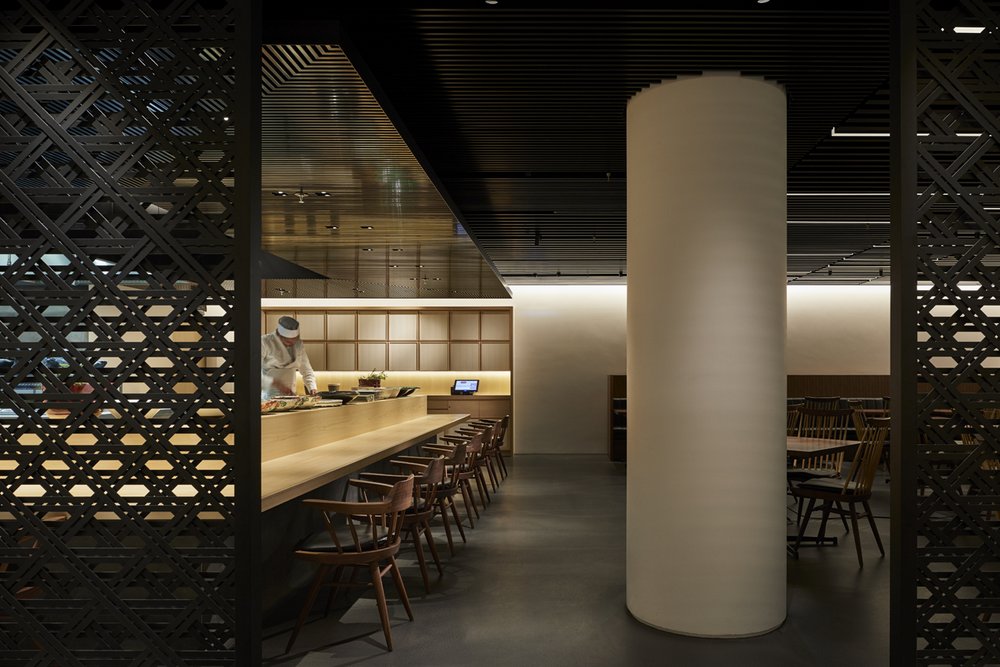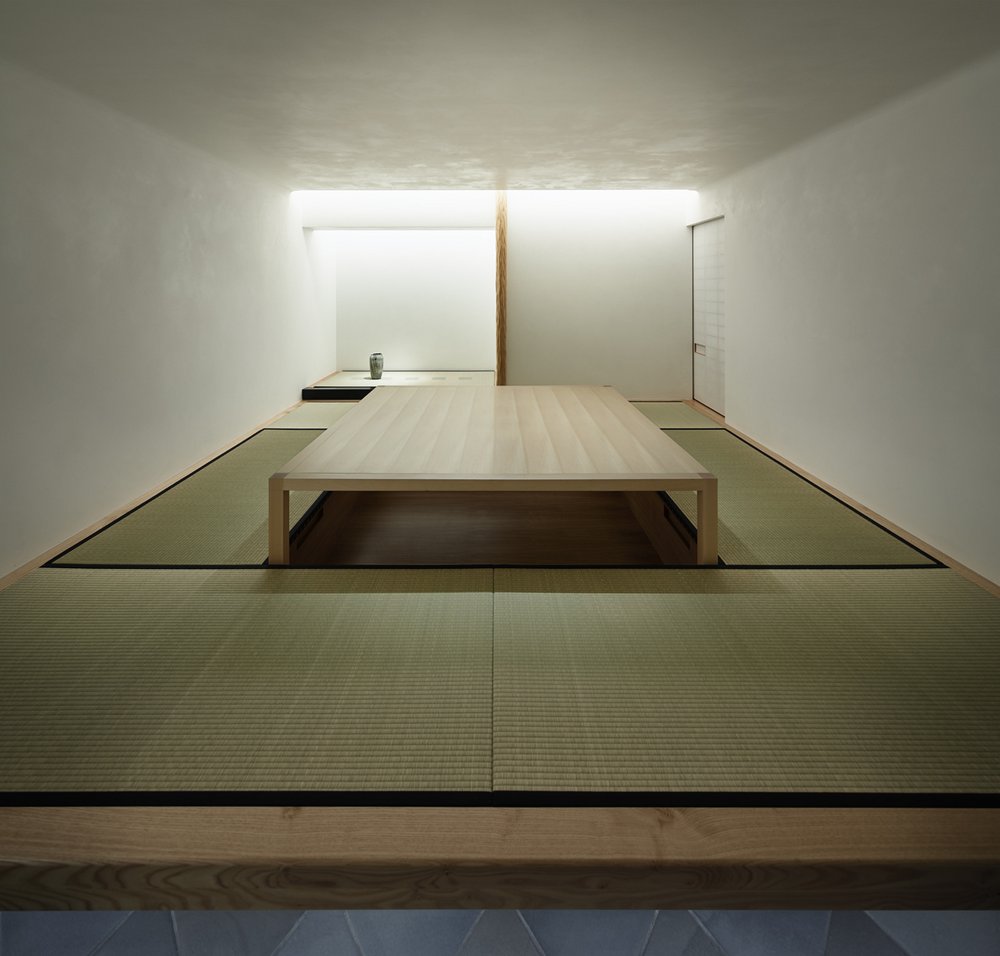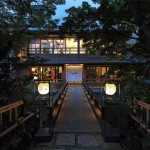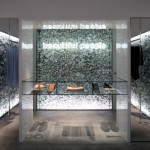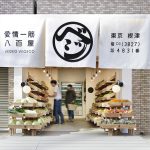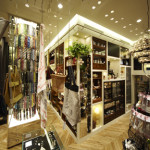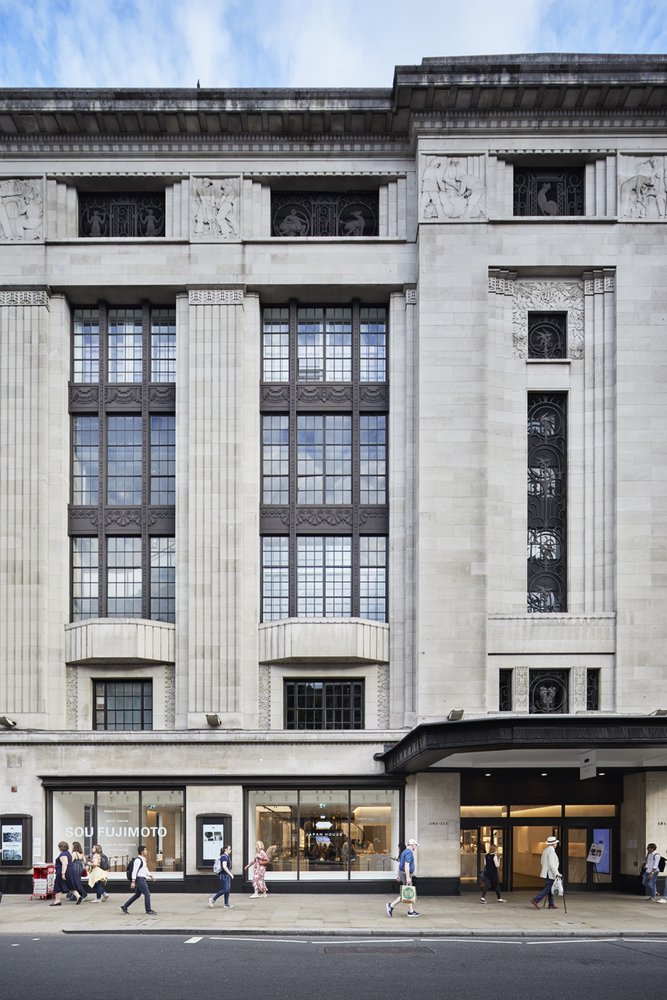
Japan House London | all photos by Nacása & Partners Inc courtesy Wonderwall
The Japan House project is a substantial initiative led by the Japanese government to establish hubs around the world – specifically, Los Angeles, Sao Paulo and London – that will showcase Japan via events, exhibitions, retail and food. Under the creative direction of Kenya Hara, different architects were appointed to design each of the hubs. Kengo Kuma was tasked with the Sau Paulo space, artist Kohei Nawa and interior designer Ryu Kosaka worked on the Los Angeles space, and Masamichi Katayama was responsible for the London space. All 3 spaces are now open, so here is a look into the most recent: Japan House London, which opened this summer.
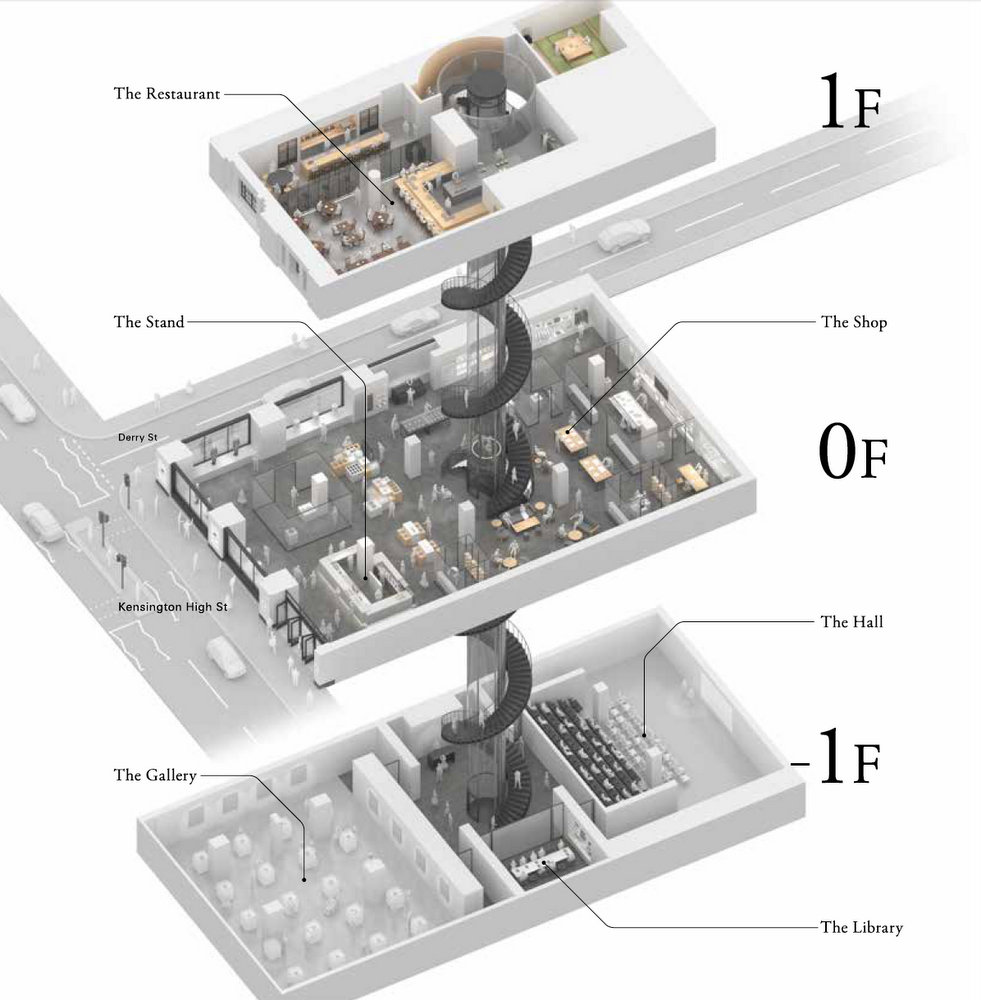
The London location has three floors and includes a shop and café stand on the ground floor, restaurant and bar on the 2nd floor, and a multipurpose hall, gallery, and library on its lower floor. The concept for the shop and gallery is the tokonoma, an alcove in traditional Japanese guestrooms. The concept was inspired by Tenshin Okakura’s concept of 虚 (vacuum) and 空 (emptiness) describing a space in which others can freely enter as the most versatile and essential,” explains the architect. “For this floor, our goal was to create a space that echoes the unique Japanese quality in which the atmosphere of the room changes according to the various elements and events taking place inside.”
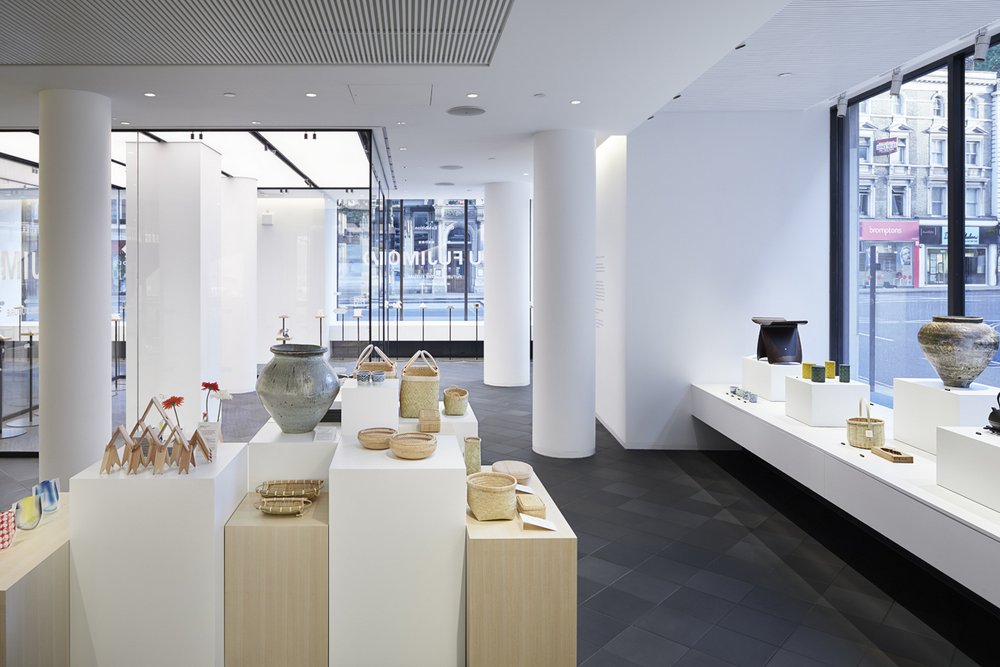
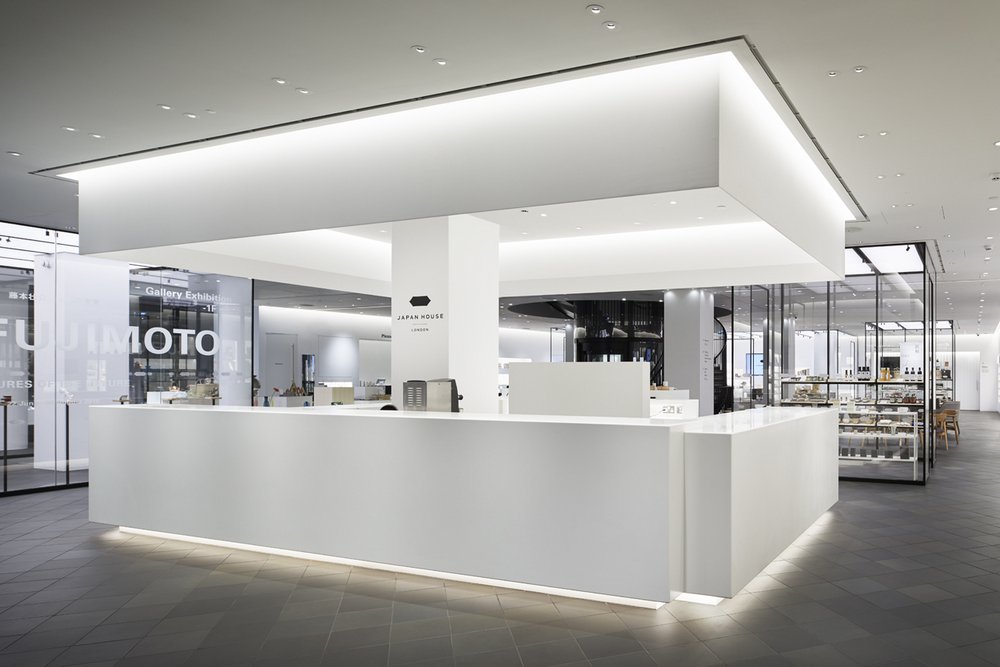
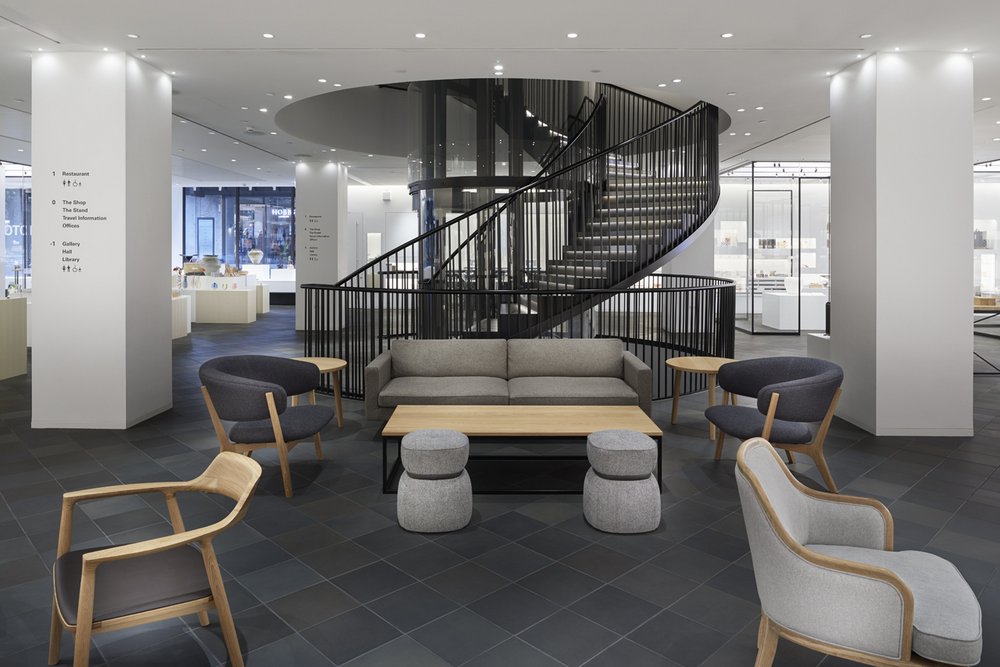
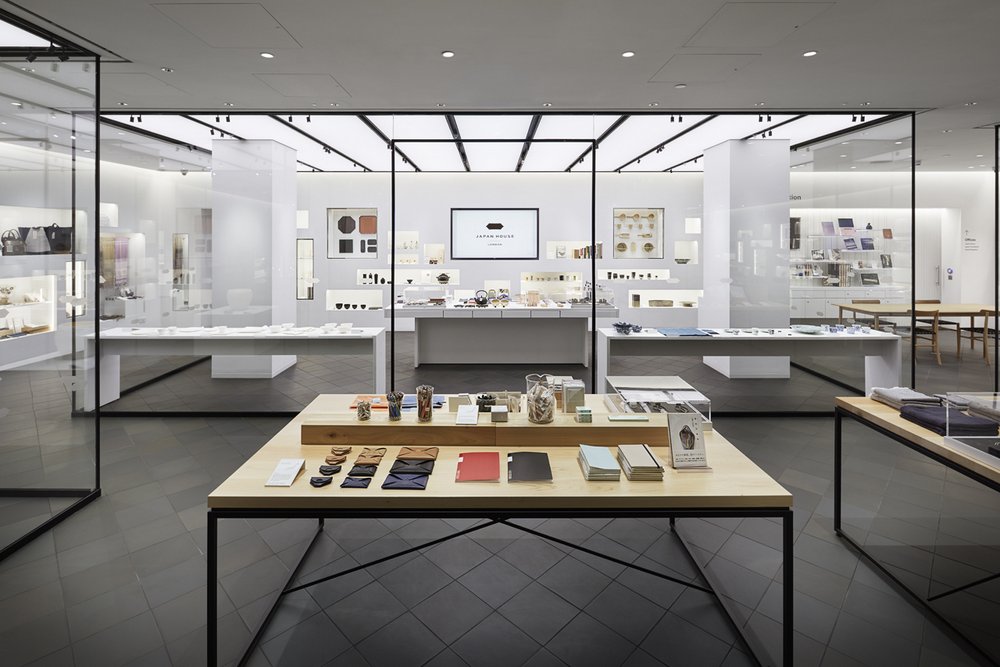
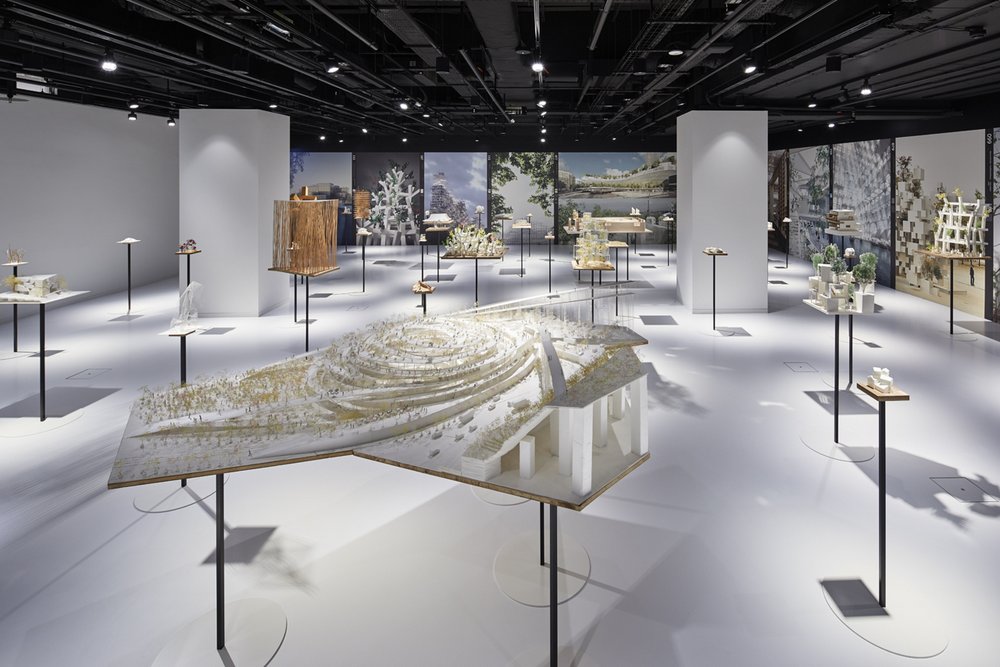
the basement gallery space hosting an exhibition on architect Sou Fujimoto, which has since moved to Japan House LA
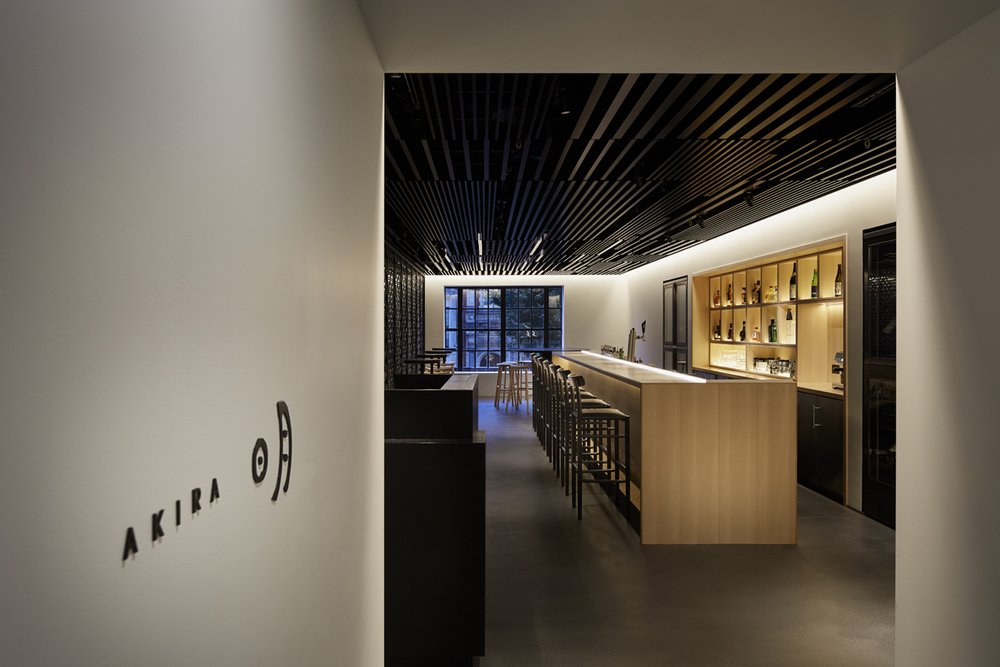
On the 2nd floor is a restaurant called Akira, Named after Chef Akira Shimizu, the restaurant presents a Japanese dining experience based on Akira’s ‘trinity of cooking’ principles – food, tableware and presentation. Katayama’s concept for the restaurant is the doma, a traditional room with an earthen floor. “This was not only a place of communication where neighbors would stop by, but it was also the center of food with a kitchen in its corner filling the air with aromas and sounds of cooking,” says Katayama. “Harnessing the unique qualities of the doma, we designed a space that amplifies and expands the joys of gathering, conversing, and dining together.”
